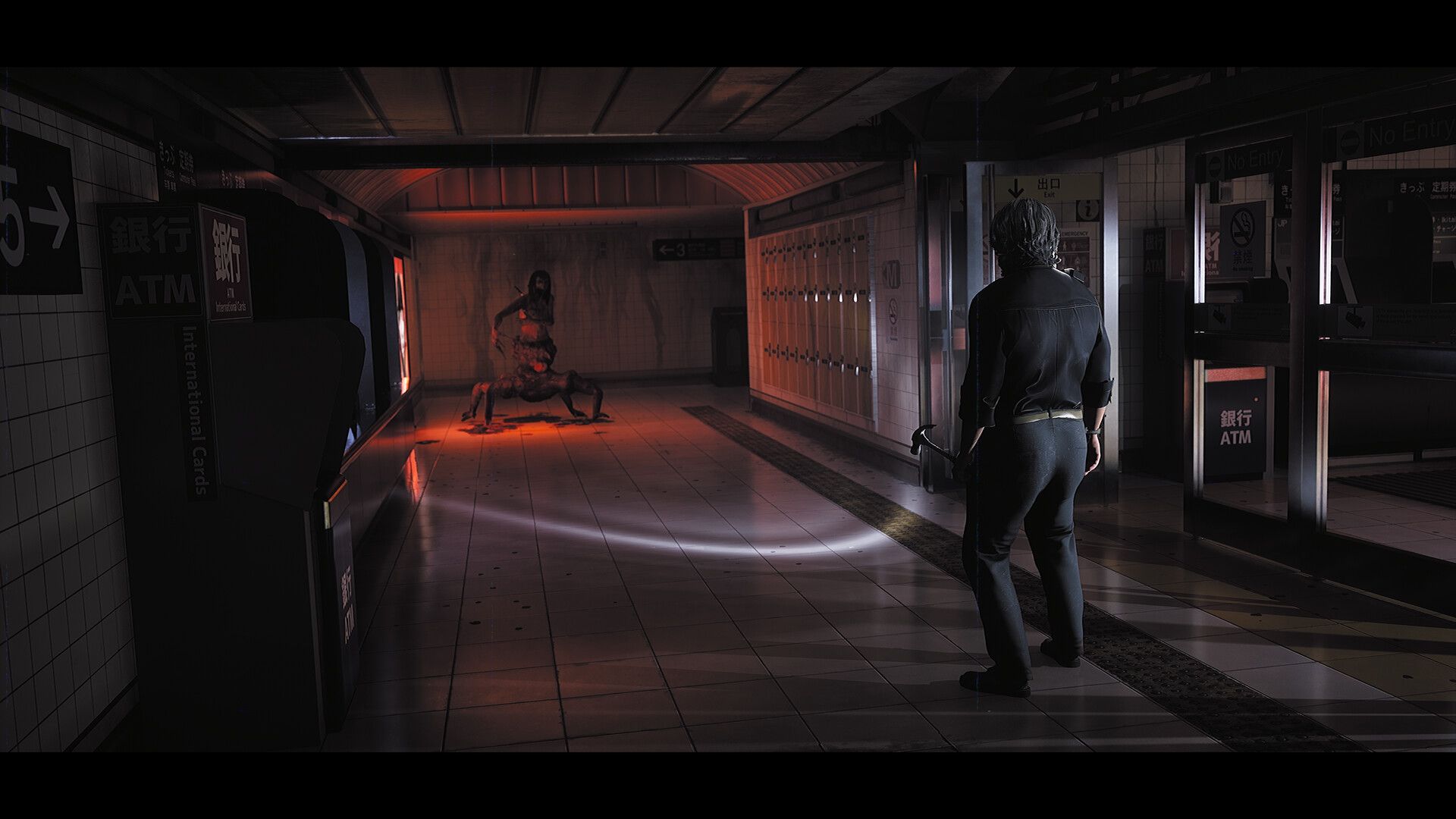
Like any other genre in gaming, horror is often built on top of established narrative and gameplay tropes. The hallmarks of horror games tend to be quite identifiable. Thanks to classics like Resident Evil and Silent Hill, we can quite easily figure out when a game is trying to be spooky, be it through the use of its camera angles, an emphasis on puzzle solving, or high-stress combat scenarios. Indie studio Red Soul Games is trying to intentionally tap into these tropes with its latest release, Post Trauma. Even by the studio’s own admission, the title was heavily inspired by PS2-era horror classics, like Resident Evil 4, Silent Hill 2, and even some of the more obscure titles out there, like Fatal Frame and Siren.
"The horror in Post Trauma tends to be pulled off quite well."
At its heart, the story in Post Trauma feels like more of a collection of ideas than it does a coherent narrative. Sure, there are bits of a story that you can follow, with the odd conversation here and there, but generally speaking, the whole title tends to rely more on its minute-to-minute gameplay to deliver its scares rather than a spooky story that may or may not involve otherworldly beings. It’s easy to spend a few minutes with the game and notice that, while it pretty much nails the atmosphere and vibes that it was going for, there is a certain lack of polish. Aside from some awkwardly-animated cutscenes, however, this lack of polish tends to add quite a bit to the game’s uneasy atmosphere.
Things start out confusingly enough. You take on the role of train conductor Roman (played by Togo Igawa). With little in the way of context, Roman wakes up in a spooky train with no obvious way out. And this is where two of the major aspects of Post Trauma start becoming evident: the game’s use of fixed cameras to create tension, as well as its emphasis on old-school puzzle solving. In this early part of the game, the camera work is especially well-done since it tends to create some downright stunning scenes, all while constantly hinting that there might be something sinister just outside of the camera’s field of vision.
Much like classic Silent Hill games, the camera often tends to move around with you, depending on the scene. One notable corridor in the early parts of the game has the camera swivel around, centering Roman in the middle of the frame as he walks down a creepy corridor that looks like it’s much longer than it should be. Clever use of camera angles like this, as well as framing that feel like they could be works of art on their own, tend to go a long way to establish the creepy, oppressive atmosphere of the game.

"Clever use of camera angles like this, as well as framing that feel like they could be works of art on their own, tend to go a long way to establish the creepy, oppressive atmosphere of the game."
When it comes to the puzzles, however, things tend to fall apart quite quickly. While the studio proudly talks about the fact that the puzzle design in Post Trauma will need players to keep a notepad nearby where they can write things down, some of the puzzles even in the early parts of the game can end up feeling quite nonsensical. Things start out well enough, with the game tasking players with figuring out a replacement cipher to figure out a lock combination to progress further. However, you start getting puzzles where, for instance, you have to find a random wire that can then be used to pull an important item through a fenced-off window closer. The fuse can then, in turn, be used to switch on a generator that powers another machine that, through vibrations, will cause a keycard to fall down.
The puzzles start feeling especially cumbersome in later parts of the game, where the fixed-perspective camera is temporarily swapped out for first-person gameplay segments. Puzzles tend to follow similar borderline-nonsensical logic straight out of a 1990s-era point-and-click adventure game, while also forcing players to deal with hazards that can’t be dealt with in more direct ways. These first-person segments, thankfully, don’t show up too often, and the regular fixed-perspective gameplay parts tend to dominate the core gameplay. Overall, however, the puzzle design tends to be a mixed bag in terms of quality. While some of them can be quite fun to figure out, especially when the game is forcing the player to take notes, other times, they add little to the overall experience, and can often end up feeling detrimental to the overall atmosphere of the game.
Speaking of which, the horror in Post Trauma tends to be pulled off quite well. Sure, we don’t really get any new groundbreaking takes on the genre, and the creepy elements tend to feel quite rote and uninspired, but combined with the game’s clever use of its camera, along with how stressful direct combat can be, the experience starts to feel greater than the sum of its parts. There is definitely a reliance on some of the more overused horror media tropes here, like creepy mannequins and mysterious shadows in the corner of your eyes. It never really detracts from the overall experience, however, and the fact that combat is awkward and punishing goes a long way in helping Post Trauma maintain its creepy vibes.

"Overall, however, the puzzle design tends to be a mixed bag in terms of quality."
The combat generally feels like a mix of both the Resident Evil style as well as the Silent Hill style of doing things. Early on in the game, there is definitely an emphasis on melee combat, and you get little more in terms of combat options than wildly swinging your makeshift weapon, and dodging. There are also firearms that you can eventually get your hands on, and that’s when things feel closer to gameplay from the original Resident Evil. You can roughly aim your weapon – made harder thanks to the camera angles – and shoot, hoping to get a good angle shot that might take enemies down in a few hits.
Combat is fairly discouraged, however, thanks to the overall scarcity of ammo, the general hardiness of enemies, and the fact that Roman can’t really survive taking too many hits head-on. Rather, Post Trauma wants you to decide whether any given combat encounter is actually worth the resources you might end up spending on it. You might ultimately be better off just dodging past the enemy and making a mad dash to the next room you need to visit.
At its best, the collection of ideas presented in Post Trauma feels like an excellent throwback to an older era of horror games. The overall atmosphere is almost immaculate, and the rough cutscenes only end up adding more to the overall sense of unease that the game is trying to make you feel. At its worst, however, the game feels like it definitely needed some extra time to think through some of its ideas, especially when it comes to the first-person segments and general puzzle design. Post Trauma feels like a strange mash-up of two different games; one of these games acts as great evidence that the old style of horror games can still be done well in the modern era of gaming. The other game, however, feels like a game that could have used some extra time in development to iron out some of its issues.
This game was reviewed on PC.
Atmosphere and creepy vibes are almost perfect; Amazing use of the camera; Difficult and awkward combat adds to the overall tension.
First-person segments can feel like a slog; Puzzle design often tends to veer off into the nonsensical; Could have used more time for polish.

















